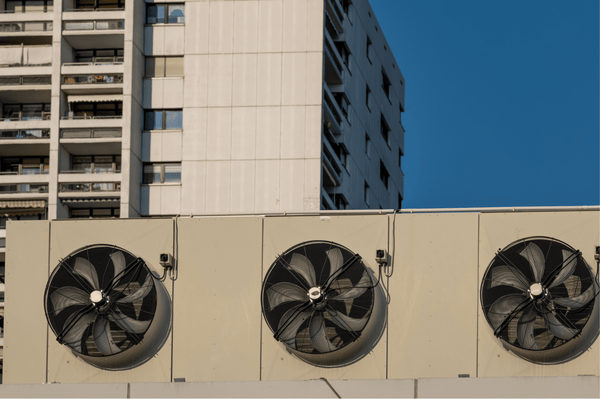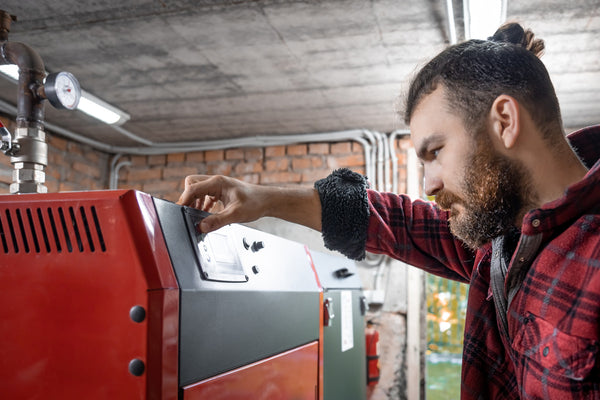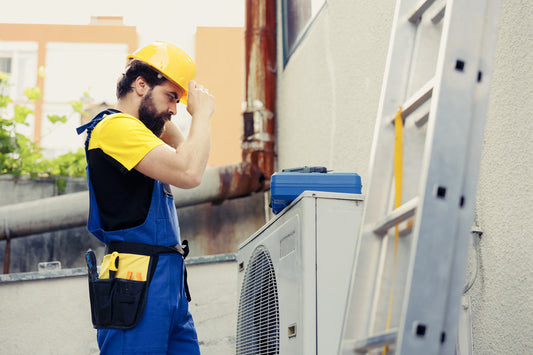Introduction to Furnace Condensate Pumps
Welcome to the world of HVAC, where the unsung heroes of your heating system work tirelessly behind the scenes to ensure your comfort and safety. Among these, the furnace condensate pump plays a pivotal role, yet it often goes unnoticed until problems arise. This guide aims to shine a light on this crucial component, exploring its functionality, importance, and maintenance. Whether you're a seasoned homeowner or just starting to navigate the complexities of home maintenance, understanding the role of a condensate pump is invaluable.

What is a Condensate Pump?
Imagine your high-efficiency furnace as a diligent worker, extracting warmth from combustion gases to heat your home. In doing so, it produces condensation, much like how a cold glass of water "sweats" on a hot day. The condensate pump is the unsung hero that handles this byproduct, collecting and removing the water to prevent damage and maintain efficiency. It's a small device with a big job: ensuring that your furnace runs smoothly and your home stays dry and comfortable.
How Does a Furnace Produce Condensation?
The process is simple yet fascinating. High-efficiency furnaces cool combustion gases below their dew point, causing them to condense into water. This condensation is a sign of the furnace's efficiency, as it extracts more heat from the gas. However, it also creates the need for effective condensation management, which is where the condensate pump comes into play.
The Importance of Condensate Pumps
Preventing Water Damage
Without a condensate pump, the water produced by your furnace could accumulate, leading to potential water damage. This could affect your home's structure, encourage mold growth, and even damage your furnace. The pump prevents these issues by ensuring that condensation is promptly removed from the furnace area.
Enhancing Furnace Efficiency
By effectively managing condensation, condensate pumps help maintain the efficiency of your furnace. This not only prolongs the life of your heating system but also ensures it operates at peak performance, reducing energy costs and saving you money in the long run.
Installation and Placement
Where to Install a Condensate Pump
The ideal location for a condensate pump is near your furnace, where it can easily collect condensation. However, the specifics can vary based on your home's layout and the furnace model. It's crucial to ensure that the pump is positioned to allow for efficient water collection and removal.
DIY Installation Tips
For those with basic handyman skills, installing a condensate pump can be a manageable DIY project. Key steps include selecting the right location, ensuring proper leveling for efficient operation, and connecting the pump to your home's drainage system. Always refer to the manufacturer's instructions for specific installation guidelines.

Maintenance and Troubleshooting
Regular Maintenance Tips
To keep your condensate pump in top condition, regular maintenance is essential. This includes cleaning the pump's reservoir, checking for proper operation, and ensuring the discharge line is clear. These simple steps can prevent many common issues and extend the life of your pump.
Troubleshooting Common Issues
If your condensate pump isn't working correctly, common issues may include a full reservoir, a malfunctioning float switch, or a clogged discharge line. Before calling a professional, check these components and clear any blockages. Often, these simple fixes can resolve the problem.
When to Call a Professional
While many condensate pump issues can be addressed with DIY methods, some situations require professional expertise. If you've tried troubleshooting without success, or if the problem involves electrical components, it's time to call in a technician.
Advanced Features of Condensate Pumps
Safety Mechanisms
Modern condensate pumps are equipped with safety features that protect your home and furnace. For example, some pumps are designed to shut down the furnace if they fail to remove condensation, preventing flooding and water damage.
Compatibility with Smart Home Systems
As smart home technology advances, many condensate pumps now offer integration with home automation systems. This allows for remote monitoring and control, adding a layer of convenience and security to your home's heating system.
Choosing the Right Condensate Pump
Factors to Consider
When selecting a condensate pump, consider the pump's capacity, compatibility with your furnace, and your home's specific needs. It's also important to look for pumps with reliable safety features and, if desired, smart home compatibility.
Top Picks for Homeowners
While specific product recommendations are beyond the scope of this guide, look for condensate pumps from reputable manufacturers with positive reviews and a track record of reliability. Your HVAC technician can also provide recommendations based on your specific system.

Image by pvproductions on Freepik
Conclusion
The Value of Investing in a Quality Condensate Pump
Investing in a high-quality condensate pump is crucial for the health and efficiency of your HVAC system. By choosing the right pump, performing regular maintenance, and understanding when to seek professional help, you can ensure that your furnace operates smoothly and efficiently for years to come.
FAQs
How often should I check my condensate pump for maintenance?
It's a good practice to check your condensate pump at least once a year, preferably before the heating season begins.
Can I install a condensate pump myself, or should I hire a professional?
If you have basic DIY skills, you can likely install a condensate pump yourself. However, for complex installations or if you're unsure, hiring a professional is recommended.
What should I do if my condensate pump stops working?
First, check for common issues like a full reservoir or a clogged discharge line. If these fixes don't work, it may be time to call a professional.
Are there condensate pumps compatible with all furnace models?
Most condensate pumps are designed to work with a wide range of furnace models, but it's important to check compatibility before purchasing.
How does a condensate pump contribute to furnace efficiency?
By effectively removing condensation, a condensate pump prevents water damage and maintains the optimal operation of your furnace, contributing to its overall efficiency.
This comprehensive guide aims to equip you with the knowledge to understand, maintain, and troubleshoot your furnace's condensate pump, ensuring the longevity and efficiency of your heating system.
Image by pvproductions on Freepik





